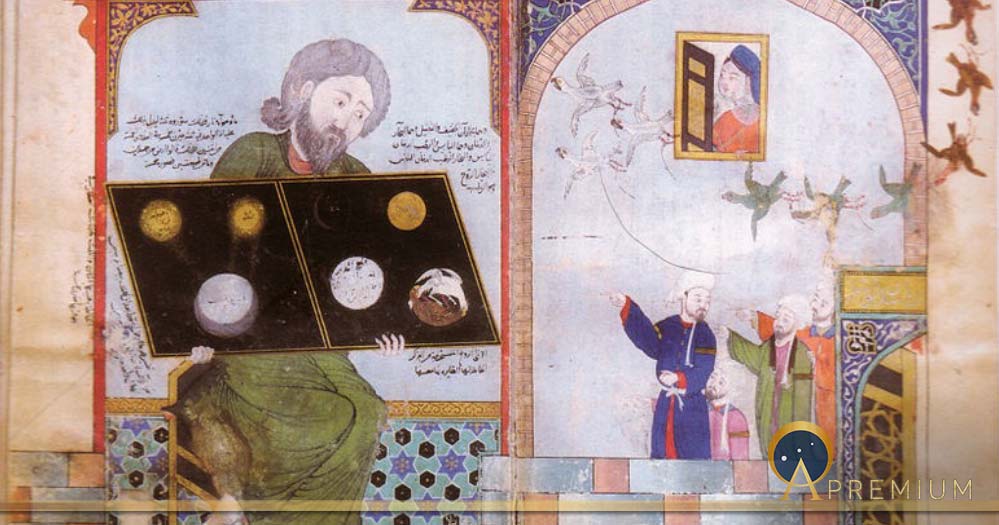Perfect Nature: Encountering The Self As A Spiritual Guide In The Arabic Hermetica
The Pseudo-Aristotelian Hermetica are a core subgroup of Arabic Hermetic texts which take the form of discourses and letters of the philosopher Aristotle to Alexander the Great. The texts concern an array of subjects, including cosmology, the fabrication of amulets and talismans, and astrological knowledge. In these texts, Aristotle claims to have originally learned the knowledge that he passes on to Alexander from the legendary sage Hermes Trismegistus, who was also the central figure of a body of philosophical, astrological, and alchemical writings composed in Greco-Roman Egypt between roughly 300 BC and 400 AD. Although the Pseudo-Aristotelian Hermetica (hereafter PsAH) and related writings have been dated to the ninth century AD, these Arabic texts are now proven to have carried over and reformulated certain concepts found in more ancient Hermetic writings.

Hermes Trismegistus, floor mosaic in the Cathedral of Siena (Public Domain)
It has been proposed that the core treatises of the PsAH cycle—including the Kitāb al-Isṭimākhīs, Kitāb al-Isṭimāṭīs, Kitāb al-Hādhīṭūs, and Kitāb al-Ustuwaṭṭās—derive from a single original work entitled Kitāb ʿIlal al-rūḥāniyyāt ( Book on the Causes of Spiritual Forces). This treatise was abridged as the Kitāb al-Madīṭīs and drawn upon by later texts including the Kitāb al-Shuʿrā al-yamāniyya, the Dhakhīrat Iskandar (Treasury of Alexander), and the Sirr al-asrār (the source text of the Latin Secretum Secretorum). Significant passages from the PsAH cycle were also included in the Arabic occult compendium the Ġāyat al-Hakīm (Latin: Picatrix) compiled in the tenth century AD. Another text that has been associated with the PsAH cycle—even though it does not mention Aristotle—is the Giranis, an Arabic translation of a Greek version of the technical Hermetic treatise the Kyranides (originally composed between the second and fourth centuries AD), which holds the honor of being one of the earliest instances of a Hellenistic text translated into Arabic.

The alchemist Jabir ibn Hayyan, from a 15th century European portrait of Geber, Codici Ashburnhamiani 1166 (Public Domain)
Encountering the Perfect Nature Higher Self
Central to the cosmology of the PsAH are the Rūḥāniyyāt, spiritual beings that transmit astral influences from the celestials to earth. The Rūḥāniyyāt represent the Arabic equivalent of the daimonic energies that emanate from the stars and planets and govern all things in the terrestrial material world in the Greco-Roman Hermetic writings (Corpus Hermeticum 3; CH 16; Joannes Stobaeus SH 6). There is also a special class of Rūḥāniyyāt called the “Perfect Nature” ( al-ṭibāʿ al-tāmm).
Like this Preview and want to read on? You can! JOIN US THERE ( with easy, instant access ) and see what you’re missing!! All Premium articles are available in full, with immediate access.
For the price of a cup of coffee, you get this and all the other great benefits at Ancient Origins Premium. And - each time you support AO Premium, you support independent thought and writing.
Jason Jarrell is co-author of Ages of the Giants: A Cultural History of the Tall Ones in Prehistoric America, available from LuLu.com. His website is https://www.paradigmcollision.com/
Top Image: Ibn Umail describes a statue of a sage holding the tablet of ancient alchemical knowledge. Illustration from a transcript of Muhammed ibn Umail al-Tamimi's book Al-mâ' al-waraqî (The Silvery Water), Islamic miniature probably from Baghdad (Public Domain)
By: Jason Jarrell
















